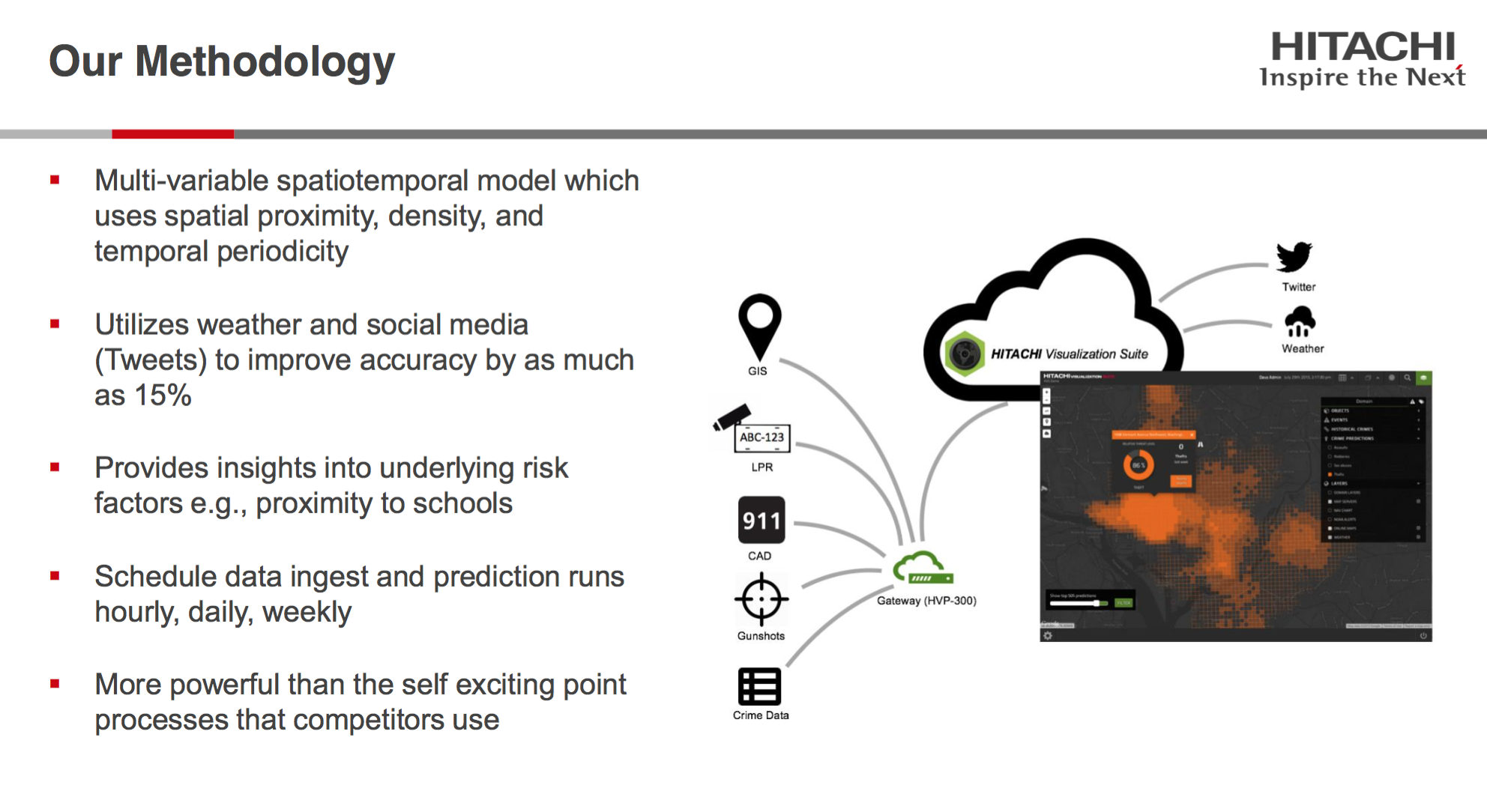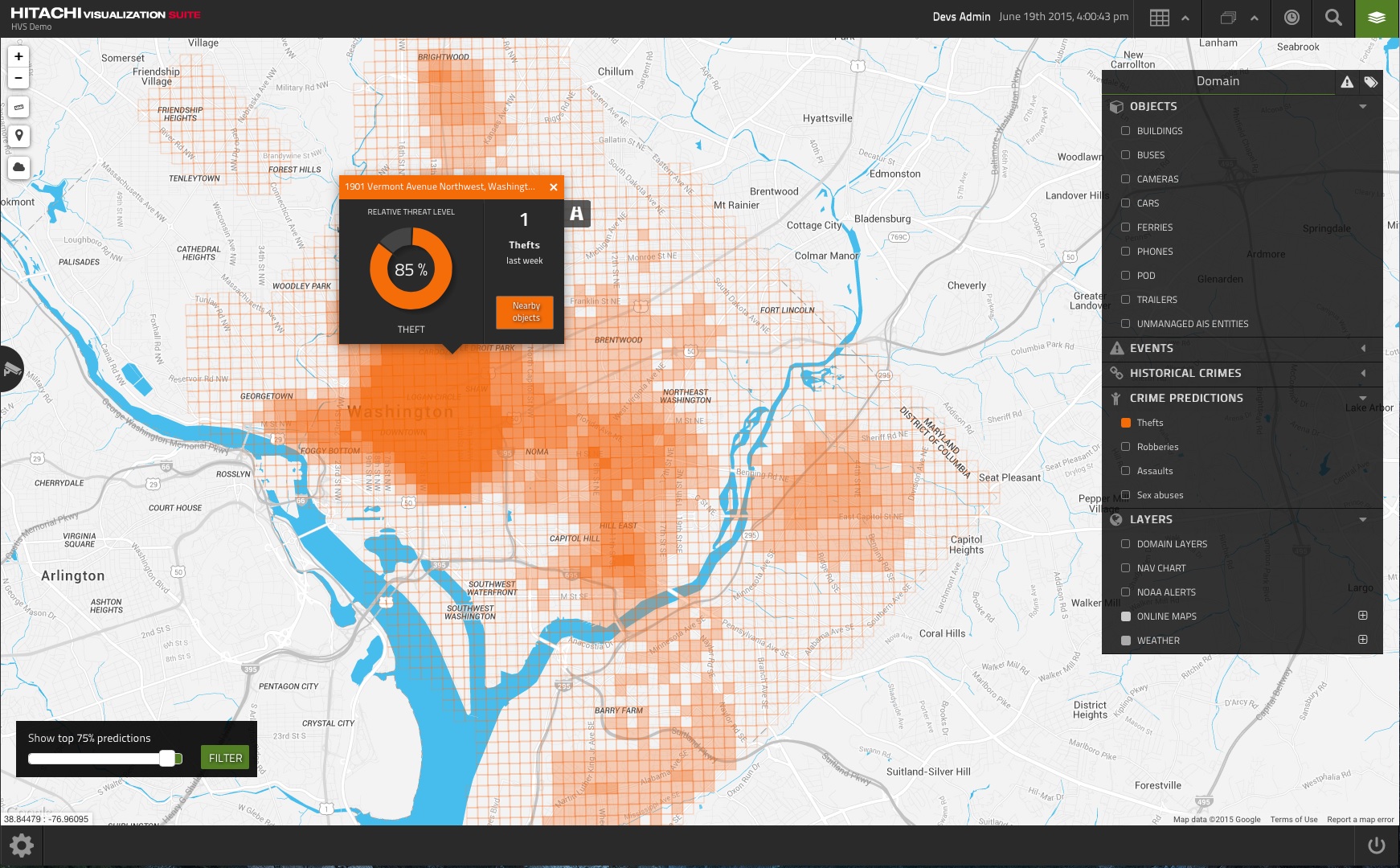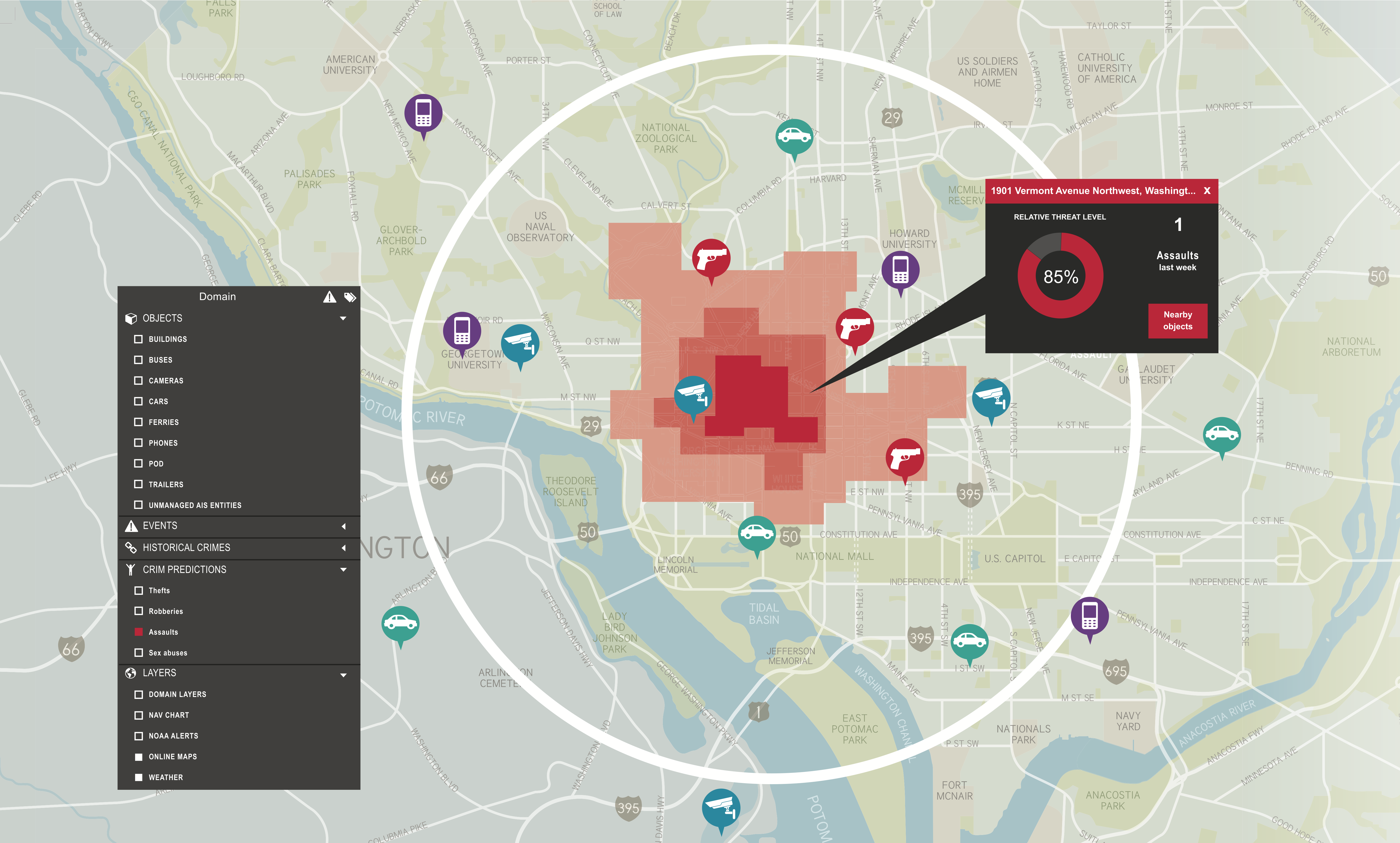What is the system trying to predict?
In 2015 Hitachi launched a predictive crime analytics platform as part of its existing Hitachi Visualization Platform/Suite. (Hitachi Visualization’s goal is to provide “real-time insights that enhance situational awareness—as well as investigative capabilities—when an incident occurs. This cloud-based application gives agencies a single pane of glass for video and data sharing.”) PCA is currently in pilot tests, but it currently aims to predict crimes.
The predictive system is called Hitachi Visualization Predictive Crime Analytics. It claims to be unique in its use of machine learning, but other systems use machine learning. To our knowledge, however, it is true for Hitachi to claim that: “It is the first predictive policing tool that uses natural language processing for topic intensity modeling using social media networks together with other public and private data feeds in real time….”
What data are the system's predictions based on?
PCA uses a panoply of data. As Hitachi puts it, PCA “[e]asily ingests multiple datasets with potential correlations to crime e.g., police station locations, roads, street light locations, parole records, license plate captures, gunshot events, social media, etc.”
Inputs include:
- historical crime statistics
- social media posts
- weather forecasts
- economic and demographic data
- public transportation stations.
Why social media posts? PCA applies its natural language processing engine to social media posts in order to ID high concentration of topics and keywords that, they claim, may lead to an increase in crime.
What approach does the system use to make its predictions? How is the data analyzed?
PCA applies machine learning techniques using R, the programming language / statistical computing software.

PCA uses natural language processing — the ability of a computer to essentially understand colloquial text or speech — anda latent Dirichlect allocation to process social media posts and find significant words that indicate what's happening.
What do users of the system see or do?
Users see a stylized interface that diagnoses the relative threat level for a certain crime to occur in a certain area based on its address. The threat levels range from 0 - 100, based on an area that is a 2000 meter square.
Here's how it can look:


How accurate are the predictions? How is accuracy defined and measured?
We’re not aware of any independent analyses of Hitachi PCA’s efficacy. Despite this, on one of the slides above, Hitachi claims that PCA is “[m]ore powerful than the self exciting point processes that competitors use.” This seems to be a direct reference and claim to being more “powerful” than PredPol, as this is the process that PredPol uses.
One of the co-founders of PCA told Fast Company in an interview that:
he still has to prove the system will work. In the upcoming tech trials, some cities will be taking action based on the predictions, reallocating police to areas when the model predicts a higher likelihood of crime. There will also be double-blind trials. Police departments will continue with business as usual, but the models will also be running in the background. Only after the test period will the police see what the model had predicted each day, so they can compare the predictions to what actually happened in the time frame. Hitachi has pledged to make all these results publicly available for scrutiny. I
If results from those double-blind trials are made publicly available, they’ll be reported here.
Which departments are using the system?
From the latest reports, Hitachi was planning to trial and/or pilot the system in roughly half a dozen cities starting in October 2015.
Though those test/pilot cities cities weren’t disclosed, it may be a good guess that D.C. is one of them. As Fast Company reported: “though Hitachi hasn't yet named them, Washington, D.C. could well be on the list. It's one of several dozen cities in the U.S. and Caribbean countries where the company already provides video surveillance and sensor systems to police departments with its Hitachi Visualization Suite. Hitachi execs provided several examples—even screenshots of the software—featuring D.C. in my conversations with them.”
How are departments using the system?
Tk.